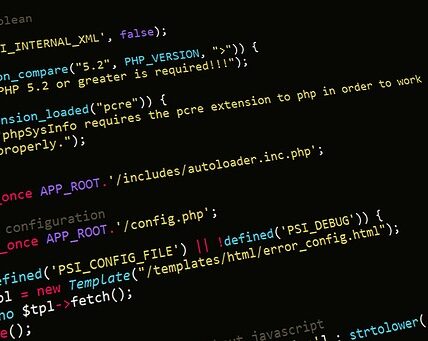Are React JS a library or framework? How has it evolved in recent years? Is it worth investing time and resources in learning React JS? These are three important questions that this article seeks to answer and discuss.
The world of technology keeps on developing at a breakneck pace, resulting in the emergence of multiple technologies. React JS is one of them. It is a JavaScript library that helps create front-end applications in a scalable and fast manner. According to Statista, there has been a steady rise in the usage of React JS among front-end developers and web application development firms. Moreover, in the last three years, its usage has grown exponentially. Therefore, it becomes important to understand if you should invest your time and resources in learning this technology.
In this article, you will learn about the concept of React JS, its evolution over the years, and the current scenario of its usage. It also highlights the advantages of using React JS for web application development and examines whether one should invest their resources in learning it. The insights gained from the discussion should help professionals in making informed decisions while opting for React JS.
Finally, this article will also delve into the reasons why React JS is a preferred choice of developers, the platforms on which React JS is widely used, and the possible issues faced by developers while using this library.
Definitions
React Js is a JavaScript library created by Facebook and released in 2013. It is used for building user interfaces for web applications and also for analyzing large datasets. React Js is a declarative, efficient, and flexible JavaScript library for building user interfaces, making it a popular choice for many developers. It uses a component-based architecture that makes it easy to create reusable components and create complex UIs.
The core idea behind React Js is that instead of building complex UIs from a bunch of primitives, React allows developers to craft components, compose them together, and use them as if they were an atomic unit. React also uses the popular JavaScript library, React Native, for a mobile UI framework.
The main advantage of React is that it gives developers a way to create user interfaces with a declarative syntax. This means that developers can write just a few lines of code to express the behavior that they want from the user interface, without needing to write a lot of code to achieve the same thing. It also allows for better scalability and performance, since the code is more efficient.
React Js is not a framework like Angular or Ember, it’s a library, so it is not designed to provide a full range of services like a framework would. Instead, it is focused on providing a set of tools to build user interfaces and make development easier, but it is not a substitute for a framework or complete development stack.
In conclusion, React Js is a JavaScript library created by Facebook and used for building user interfaces for web apps. It allows developers to create components, compose them together, and use them as if they were an atomic unit. React also uses the popular JavaScript library, React Native, for a mobile UI framework. It is a declarative library that makes it easier to create complex user interfaces, making it a popular choice for many developers.
Understanding React Js
What is React Js?
React Js is an open source JavaScript library built and maintained by Facebook and the community of developers. It is used to create user interfaces for web applications. It is also used to build large, complex applications that can run on a variety of platforms including on the web, mobile phones, and servers, among many others. React is a popular choice among developers due to its flexibility, scalability, and high performance.
React is also lightweight, meaning it requires less code to create a simple application. It is considered to be very easy to learn and use, with a simple syntax that makes building interfaces accessible to a wide range of developers. React also makes it easier to create re-usable components, which helps make development faster and more efficient.
Benefits of React Js
The primary advantages of using React are its component-based architecture and the fact that it focuses on the UI (user interface). With components, applications can be built in a modular way, allowing for changes to be made quickly and easily, without the need for rewriting large amounts of code. React also allows for re-usable components to be used multiple times in an application, saving the developer time and energy.
React is also very performant and efficient due to its virtual DOM (Document Object Model). A virtual DOM allows changes to the DOM to be made in memory, which means they don’t always need to be written to the actual DOM. This is advantageous for loading information as it allows only the sections of the page which need to be updated to be changed, instead of having to reload the entire page.
Some other benefits of React include its easy to use developer tools, clean API’s, great mobile support, and SEO (Search Engine Optimization) friendly code.
Uses of React Js
React is used to create interactive user interfaces for a wide range of applications. It can be used for everything from small single-page applications to large scale enterprise applications. It is used in web development, game development, mobile development, and much more.
Some examples of popular applications that use React are:
- AirBnB
- UberEats
- Netflix
- The New York Times
- Microsoft Office
React is also used to build Progressive Web Apps (PWAs) which are a type of application that can use web technologies and be delivered as a web experience like a website, but can be used in more advanced ways like an actual application. PWAs are becoming increasingly popular due to their ease of use, ability to be stored offline, fast loading time, and more.
What is a Library and Framework?
Introduction to Libraries and Frameworks
Libraries and frameworks are commonly used tools in the field of computer programming. While they are sometimes used interchangeably, they are actually quite different. Libraries are collections of pre-written code that contain functions and routines that can be used to perform specific tasks. On the other hand, frameworks are sets of guidelines or structures that serve as foundations for programming applications. These guidelines provide organizational structure, data access, and other programming features. The main difference between a library and a framework is that libraries are focused on providing specific functions while frameworks are focused on providing general features that can be used for building full-blown applications.
React JS: Library or Framework?
React JS is an open-source JavaScript library for building user interfaces. It was created by Facebook in 2013 and is primarily used for developing single-page applications and user interfaces. At its core, React JS provides the tools for constructing components and setting up communication between the components. While it does provide a structure to work with, it cannot be called a full-fledged framework. React JS does not provide features such as database access or routing, which are essential features of a general-purpose framework. Additionally, React JS does not provide the necessary guidelines or structures for developing a full-blown application.
Benefits of Libraries and Frameworks
Due to the difference in purpose, libraries and frameworks each offer their own unique set of benefits. Libraries allow developers to quickly and easily implement features that would otherwise require significant time and effort to program. For example, libraries provide functions such as encryption, data parsing, and image manipulation. Frameworks provide developers with a starting point for creating applications and can even provide them with a set of features and tools. This can be invaluable for developers who are trying to quickly develop applications. Additionally, they provide a consistent structure for applications, making them easier to maintain and debug.
In conclusion, libraries provide developers with specific functions while frameworks provide them with general tools and structures. React JS is primarily a library and provides developers with the ability to quickly build user interfaces and single-page applications. While it does not provide the same level of features and tools as a full-fledged framework, React JS is an invaluable tool in the development of modern web applications.
Exploring the Difference Between React Js Library and Framework
What is React Js?
React Js is a JavaScript library used for building user interfaces (UI). It was developed by Facebook and Instagram in 2011 and released as open-source in 2013. React Js is declarative, which means it makes it simpler to create interactive UIs with minimal coding. It also uses a component-based programming structure, where small, self-contained bits of code are organized into higher-order, reusable components. React Js also utilizes the virtual DOM, an off-screen model of a webpage’s structure. This helps improve the speed and performance of React Js applications.
React Js as a Library vs. as a Framework
React Js is often described as a library and a framework, but it is officially referred to by Facebook as a “JavaScript Library for building user interfaces”. So what is the difference between a library and a framework? A library primarily provides open source code, while a framework provides an interface to design applications. A library does not contain any structure or architecture code, while a framework does. React Js provides only open source JavaScript code, so it is a library, not a framework.
When using React Js as a library, developers need to decide which libraries, tools, and frameworks to use along with React Js. This requires a greater level of expertise and understanding of how all of these components work together to create the desired application. React Js does not provide an inherent solution, so developers usually use complementary libraries such as Redux for state management and React Router for routing. This requires separate installation, configuration, and thorough testing.
In contrast, with a framework, a developer does not need to understand the inner workings of the code. This is because the framework provides a strict structure and underlying code, so the developer just needs to understand how to use the structure and code to create the desired application. This is an advantage for developers that don’t have a solid understanding of all of the underlying components that make up the application.
In conclusion, React Js is officially a library. It provides open source JavaScript code and does not provide an inherent structure as a framework does. Developers need to decide which library, tools, and frameworks to use along with React Js when creating applications. This requires expertise and understanding of how all the components work together, whereas with a framework, developers only need know how to use the structure and code to create an application.
Conclusion
At the end of this discussion, it is undeniable that React JS is a highly important technology within the modern development landscape. It is a JavaScript library rather than a framework, but its potential cannot be overlooked. All developers should strive to educate themselves on this important technology, as its use may become even more commonplace in the coming years. This raises the thought-provoking question: how do React JS and other JavaScript libraries fit into the modern web development world?
It is clear that React JS is a library, and one which many developers should become more familiar with. To stay ahead, however, developers must keep an eye out for new releases related to React JS and other JavaScript libraries. Following this blog could prove to be a great way to stay informed on the latest updates in the development world.
Finally, here is a brief FAQ section concerning React JS in order to provide further insight:
Q: What is React JS?A: React JS is a JavaScript library which provides a robust set of tools for developing user interfaces. It can be used to power web and mobile applications.
Q: Where can I learn React JS?A: There are a number of online resources, tutorials, and books which can provide developers with the necessary React JS knowledge they require.
Q: Are there alternatives to React JS?A: Yes, there are multiple libraries and frameworks which can resemble React JS, such as Angular and Vue.
Q: What types of applications can React JS be used for?A: React JS is suitable for constructing user interfaces for web and mobile applications.
Q: Does React JS include any form of support?A: Yes, React JS provides solutions for debugging and error handling, as well as some assistance in the form of documentation and tutorials.
In conclusion, React JS is a valuable tool for developers. Though it is a library rather than a framework, with its many features and benefits, it may become an even more prevalent part of development in the near future. To remain informed on the newest developments, developers should seek out resources such as this blog. Hopefully, this FAQ section has cleared up any confusion concerning React JS.




